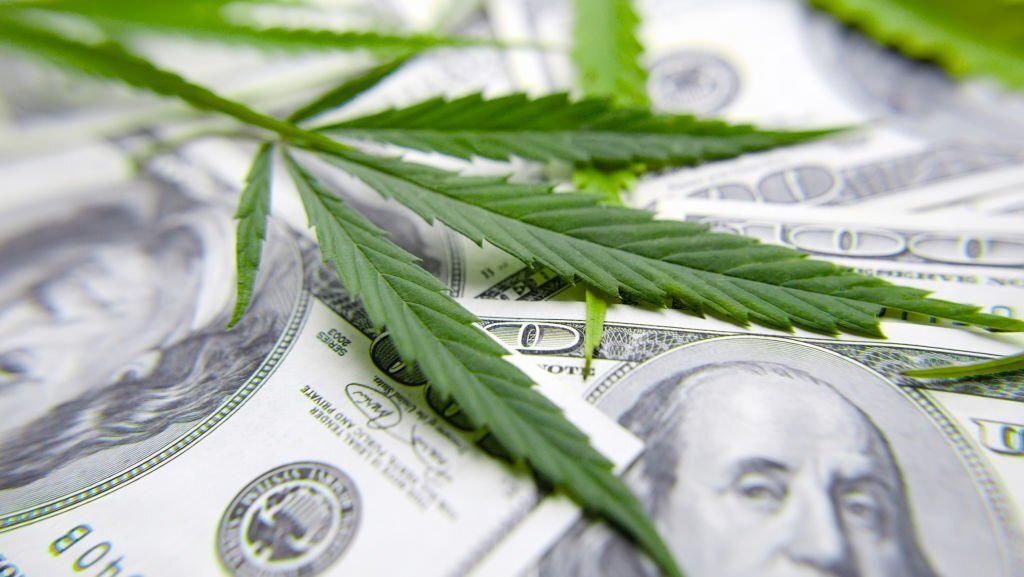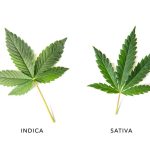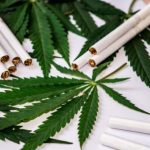🔥 Website for Sale - Contact Us
How to pick the best grow tent setup for beginners? Starting an indoor garden can seem daunting, particularly when faced with the costs associated with grow tents and other necessary equipment. However, with the right approach, it’s possible to create a budget-friendly grow tent setup that fosters healthy plant growth without breaking the bank.
In this guide, we’ll walk through the essential components of a budget-friendly grow tent setup and provide valuable tips and strategies.
II. Key components of a budget-friendly grow tent setup
A. Grow tent
Before we dive into the world of grow tents, let’s quickly talk about why they are so essential for your indoor gardening success. Grow tents create a controlled environment for your plants, allowing you to maintain optimal temperature, humidity, and light conditions.
Let’s explore the key factors to consider when choosing a budget-friendly grow tent:
Importance of size and quality
The first thing to consider is the size of your grow tent. It’s crucial to choose a tent big enough for the number of plants intended to grow. Grow tents come in various sizes, from small 2×2 feet tents to larger 10×10 feet options. For beginners, a 2×4 feet or 4×4 feet tent is usually sufficient to start with, as it offers enough space for multiple plants without overwhelming your living space.
Look for grow tents with sturdy frames, durable fabric, and heavy-duty zippers. The tent should also be lightproof, preventing light leaks that can disrupt your plants’ growth cycle.
Recommended budget-friendly grow tent models
There are several grow tent models on the market that offer excellent quality at an affordable price. Here are our top recommendations for budget-friendly grow tents:
VIVOSUN Mylar Hydroponic Grow Tent: This grow tent features a durable frame, tear-proof Mylar lining, and lightproof construction.
CoolGrows Indoor Mylar Grow Tent: Another excellent option, the CoolGrows grow tent offers a sturdy build, reinforced corners, and a removable floor tray for easy cleaning. It’s available in multiple sizes as well.
TopoLite Full Range Indoor Grow Tent: The TopoLite grow tent is an affordable option with heavy-duty zippers, a double-stitched fabric, and a 96% reflective Mylar lining to optimize light distribution.
B. Grow lights
One of the most critical components of your grow tent setup is the grow lights. These artificial light sources mimic the sun’s natural spectrum and provide your plants with the necessary energy to grow and thrive. When choosing grow lights for your budget-friendly grow tent, there are several factors to consider:
Types of grow lights and their impact on plant growth
Here’s a quick rundown of the most common options:
Fluorescent lights (CFLs and T5s): These are energy-efficient, low-heat options suitable for beginners. CFLs are compact and can fit into tight spaces, while T5s are tube-shaped and offer a more even light distribution. They are best for vegetative growth and small-scale setups.
High-Intensity Discharge (HID) lights: These lights, including Metal Halide (MH) and High-Pressure Sodium (HPS) lamps, offer high light output and penetration. However, these lights can generate a lot of heat and consume more energy, making them not cost-effective.
Light Emitting Diodes (LEDs): LEDs are energy-efficient, long-lasting, and produce less heat than HID lights. They come in various spectrums, making them suitable for all stages of plant growth.
Cost-effective options for beginners
When choosing budget-friendly grow lights, consider the cost of the light itself, energy consumption, and the potential need for additional cooling equipment. Here are our top recommendations for cost-effective grow lights:
SunBlaster CFL Self-Ballasted Lamps: These compact lamps are energy-efficient and easy to install, making them ideal for beginners.
AgroBrite T5 Fluorescent Fixture: This T5 fixture offers even light distribution and low heat output, perfect for small-scale setups or those with limited space.
Mars Hydro TS 1000W LED Grow Light: For those willing to invest in LEDs, this model offers a full spectrum light and energy efficiency at a reasonable price. It’s suitable for both vegetative growth and flowering stages.
C. Ventilation system
A proper ventilation system is crucial for maintaining a healthy environment within your grow tent. It helps regulate temperature and humidity, prevents mold and mildew, and ensures your plants receive fresh, CO2-rich air. Here’s what you need to know about setting up a budget-friendly ventilation system:
Importance of proper air circulation
Adequate air circulation is essential for preventing issues like mold and mildew. It also helps maintain consistent temperature and humidity levels, ensuring your plants receive the optimal conditions for growth.
Additionally, oscillating fans inside the grow tent can help promote even air distribution and prevent hotspots.
Budget-friendly fans and filters
To set up a cost-effective ventilation system, focus on finding fans and filters that offer the best balance between price and performance. Here are some budget-friendly options:
Exhaust fans: Consider affordable inline duct fans, such as the VIVOSUN 4-Inch Inline Duct Fan or the iPower 4-Inch Inline Duct Fan. These fans are efficient and powerful enough for small to medium-sized grow tents.
Intake fans: For the intake fan, you can use a simple clip-on or oscillating fan. Look for models with adjustable speeds, like the Comfort Zone 6-Inch Clip-On Fan or the Genesis 6-Inch Clip Convertible Table-Top & Clip Fan.
Carbon filters: To help control odors and improve air quality, a carbon filter is a valuable addition to your ventilation system. Budget-friendly options include the VIVOSUN 4-Inch Air Carbon Filter or the iPower 4-Inch Air Carbon Filter.
D. Growing medium and containers
The growing medium and containers you choose can significantly impact your plants’ health and growth. It’s essential to find budget-friendly options that still provide a suitable environment for your plants to thrive.
Pros and cons of different growing mediums
Here’s a quick overview of some popular options:
Soil: A tried-and-true growing medium, soil is easy to work with and widely available. Look for high-quality organic potting mixes that contain the necessary nutrients for plant growth. Soil can retain moisture well but may be more prone to pests and diseases.
Coco coir: Made from coconut husks, coco coir is an eco-friendly, sustainable, and affordable growing medium. It offers excellent aeration and water retention while being less susceptible to pests and diseases. However, it may require additional nutrients for optimal plant growth.
Perlite and vermiculite: These inorganic materials can be added to soil or coco coir to improve aeration and drainage. They are budget-friendly and widely available, but using them as standalone growing mediums is not recommended.
Affordable containers for various plant sizes
Here are some budget-friendly container options to consider:
Fabric pots: Fabric pots, such as the VIVOSUN Heavy-Duty Thickened Nonwoven Fabric Pots or the iPower Grow Bags, are affordable, reusable, and promote healthy root development through air pruning. They also offer excellent drainage and prevent overwatering.
Plastic pots: Plastic pots are another cost-effective option, available in various sizes and shapes. Look for models with drainage holes, like the GROWNEER 12-Pack Nursery Pots, to ensure proper water management.
DIY containers: You can also repurpose household items like buckets, storage containers, or food containers as plant pots. Just make sure to add drainage holes and use a suitable growing medium.
E. Nutrients and supplements
Providing your plants with the necessary nutrients is essential for promoting healthy growth and maximizing yields. While there are many nutrient solutions available, finding budget-friendly options without sacrificing quality can be a challenge. In this section, we’ll discuss the importance of nutrients and recommend some cost-effective solutions for your grow tent setup.
Essential nutrients for plant growth
Plants require a mix of macro and micronutrients to grow and develop properly. The primary macronutrients are nitrogen (N), phosphorus (P), and potassium (K), while micronutrients include elements like calcium, magnesium, and iron. Each nutrient plays a specific role in plant growth, and deficiencies can lead to various issues, including stunted growth, leaf discoloration, and reduced yields.
Soil-based mediums often contain a base level of nutrients, while coco coir and other soilless mediums typically require the addition of a complete nutrient solution.
Budget-friendly nutrient solutions
Here are some budget-friendly nutrient solutions that provide your plants with the essential nutrients they need to thrive:
General Hydroponics Flora Series: This three-part nutrient system allows you to customize the nutrient ratios to suit your plants’ specific needs.
FoxFarm Grow Big, Tiger Bloom, and Big Bloom Trio: This nutrient trio from FoxFarm is another affordable option that provides a complete nutrient solution for your plants. It’s suitable for both soil-based and hydroponic systems.
Dyna-Gro Foliage-Pro and Bloom: The Dyna-Gro nutrient line offers a simple, two-part system for vegetative growth and flowering stages. It’s budget-friendly and provides a balanced nutrient profile for your plants.
When using nutrient solutions, it’s essential to follow the manufacturer’s instructions and monitor your plants for signs of nutrient deficiencies or excesses. Adjusting your nutrient regimen as needed will ensure your plants receive the proper nutrition for optimal growth and development.
In conclusion, providing your plants with the right nutrients is an essential aspect of a successful budget-friendly grow tent setup. By selecting affordable yet high-quality nutrient solutions, you can support your plants’ growth without breaking the bank.
III. Setting up your budget-friendly grow tent
1. Assemble your grow tent
Ensure that the tent is sturdy, properly sealed, and has no light leaks. Position the tent in a location with easy access to power outlets and water sources, while also providing adequate space for your ventilation system and grow lights.
2. Install your grow lights
Mount your chosen grow lights inside the grow tent according to the manufacturer’s guidelines. Adjust the height of the lights to ensure proper coverage for your plants, keeping in mind that the distance between the lights and the plant canopy may vary depending on the type of grow light you’re using. Secure the lights to the tent frame using hanging straps, ratchets, or chains.
3. Set up the ventilation system
Install the exhaust fan at the top of the tent, ideally near a ventilation hole or duct. Attach the carbon filter to the exhaust fan using ducting if desired. Position the intake fan near the bottom of the tent, opposite the exhaust fan, to create proper airflow. Install oscillating fans within the grow tent to promote even air distribution and prevent hotspots.
4. Prepare your growing medium and containers
Fill your chosen containers with the selected growing medium, ensuring proper drainage and aeration. If using soil or a soilless mix, consider adding perlite or vermiculite to improve the medium’s texture and drainage capabilities. Position the containers inside the grow tent, ensuring they have adequate space and light coverage.
5. Plant your seeds or seedlings
Carefully plant your seeds or seedlings in the growing medium, following the specific planting instructions for each plant species. Water the plants as needed, ensuring the growing medium remains moist but not saturated.
6. Apply nutrients and supplements
Monitor your plants for signs of nutrient deficiencies or excesses and adjust the nutrient regimen as needed.
7. Monitor and maintain your grow tent
Regularly check the temperature, humidity, and light levels within your grow tent, making adjustments as necessary to maintain optimal growing conditions.
With the right setup, care, and maintenance, your budget-friendly grow tent will provide a nurturing environment for your plants, helping you achieve gardening success without breaking the bank.
IV. Maintaining your grow tent on a budget
In this section, we’ll provide tips and strategies for maintaining your grow tent without spending a fortune.
Regular inspections
Make it a habit to inspect your grow tent daily, checking for any signs of pests, diseases, or nutrient deficiencies. Catching problems early will save you time and money, as it’s often easier and more cost-effective to address issues in their early stages.
Keep it clean
Maintaining cleanliness in your grow tent is crucial for preventing pests and diseases. Regularly clean and sanitize the grow tent walls, floor, and equipment, and remove any debris or dead plant material promptly. Also, be sure to wash your hands and change your clothes before entering the grow tent to minimize the risk of introducing contaminants.
DIY pest control solutions
While commercial pest control products can be effective, many DIY solutions are budget-friendly and just as efficient. For example, you can use a mix of water and dish soap in a spray bottle to combat common pests like aphids and spider mites. Neem oil is another natural, affordable option for controlling pests and preventing fungal infections.
Optimize watering and feeding practices
Overwatering and overfeeding can lead to various issues, including root rot, nutrient burn, and pest infestations. To save money and keep your plants healthy, be mindful of your watering and feeding practices. Water your plants only when the growing medium feels dry to the touch, and follow the manufacturer’s recommendations for nutrient application rates.
Monitor and manage environmental conditions
Regularly check these conditions and make adjustments as needed. Investing in a budget-friendly hygrometer and thermometer can help you keep track of the environmental conditions inside your grow tent.
Plan for future growth
As your plants grow, they may require additional support or space. Plan ahead and invest in affordable solutions like plant stakes, trellises, or netting to support your plants as they mature. By anticipating your plants’ needs, you can save money and prevent issues down the line.
V. Troubleshooting common grow tent problems
1. Temperature and humidity fluctuations
If you notice significant temperature or humidity fluctuations in your grow tent, first check your ventilation system to ensure it’s functioning correctly. Adjust fan speeds or add more fans if necessary.
2. Pests and diseases
Pests and diseases can quickly wreak havoc on your indoor garden. To address these issues, first, identify the specific pest or disease affecting your plants. Then, use appropriate control measures, such as natural or chemical pesticides, fungicides, or DIY solutions like neem oil or soap sprays. Always follow the manufacturer’s instructions and apply treatments in a targeted manner to minimize potential harm to your plants.
3. Nutrient deficiencies or excesses
Start by checking your nutrient solution’s pH and EC (electrical conductivity) levels to ensure they’re within the optimal range. Adjust your nutrient regimen as needed, and monitor your plants closely for signs of improvement.
4. Poor lighting
Inadequate lighting can lead to leggy, weak plants and reduced yields. If you suspect the grow lights aren’t providing enough coverage or intensity, consider adjusting their height, upgrading to a more powerful light source, or adding supplemental lighting. Keep in mind that different plants have varying light requirements, so tailor your lighting setup accordingly.
5. Root issues
Root rot or poor root development can be caused by overwatering, poor drainage, or a lack of oxygen in the growing medium. To address these issues, ensure your containers have proper drainage and consider adding perlite or vermiculite to your growing medium to improve aeration. Water your plants only when the growing medium feels dry to the touch, and avoid letting your plants sit in standing water.
6. Light leaks
Light leaks in your grow tent can disrupt your plants’ photoperiod and negatively impact their growth. Inspect your grow tent for any gaps, holes, or seams that may be letting in light. Use reflective tape, fabric, or blackout curtains to seal any light leaks and maintain a consistent dark period for your plants.
7. Odor control
A strong odor from your grow tent can be unpleasant and may even draw unwanted attention. To manage odors, make sure your ventilation system is working efficiently and includes a carbon filter. Replace the carbon filter regularly, as its effectiveness decreases over time. In addition, consider using air purifiers, odor neutralizers, or essential oil diffusers to help mask odors outside the grow tent.
By learning to troubleshoot and resolve these common grow tent problems, you can ensure your indoor garden remains healthy and productive.
VI. Conclusion
In conclusion, don’t let financial constraints hold you back from pursuing your passion for indoor gardening. With a little creativity and resourcefulness, you can create the cannabis of eden that fits your budget. Happy growing!





